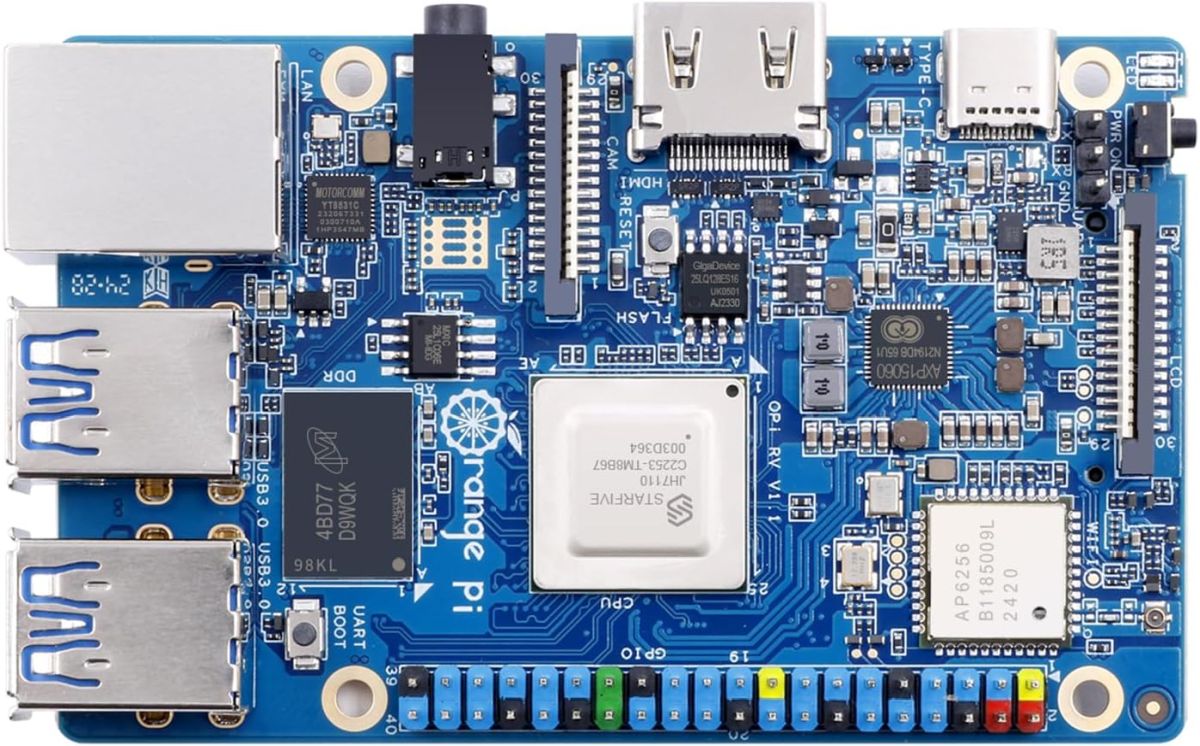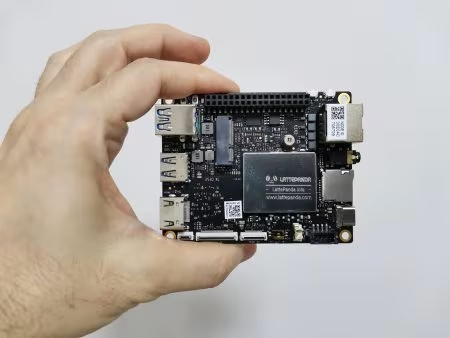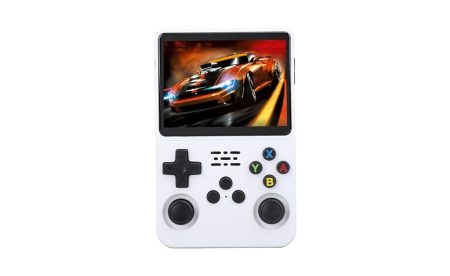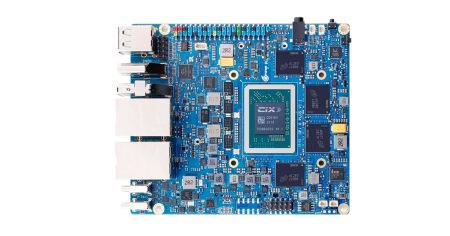- Maybe you missed it? Best single board computers
- The Best Single-Board Computers for Robotics of 2024 and Beyond (Top brands list)
The Best Single Board Computers for Robotics in 2024
As robotics continue to grow in popularity and importance, the need for powerful and versatile single-board computers (SBCs) has become increasingly important. Small devices are important for robotics projects. They provide the computing power needed to control motors, sensors, and other important components.
With so many different SBCs on the market, it can be tough to know where to start. That’s why we’ve compiled a list of the best SBCs for robotics in 2024, based on factors like processing power, connectivity options, and ease of use.
What type of GPIO header pins are needed for robotics?
GPIO header pins are essential for robotics as they allow the robot to interface with various electronic components. For robotics projects, it is crucial to choose the right type of GPIO header pins, which are compatible with the microcontroller or single-board computer being used. The most common types of pins used in robotics are the 40-pin header, which is commonly found on Raspberry Pi boards, and the 26-pin GPIO header, which is used in the Arduino microcontroller. These pins can be used to control motors, sensors, and other electronic components, making them crucial for building advanced robotics projects. It is important to ensure that the pins are of high quality and are soldered correctly to avoid any connection issues or malfunctions during operation.
Choosing a Single-Board Computer for robotics projects
When selecting a single-board computer (SBC) for a robotics project, it’s essential to consider the requirements of the project first. The SBC should be powerful enough to handle the required tasks, but not too expensive or overpowered for the job. It’s also important to consider the compatibility of the SBC with other hardware components and software tools that will be used in the project. The size and form factor of the SBC should also be considered, as it will determine the physical size of the robot. Additionally, the availability of community support and documentation for the SBC is crucial, as it will aid in troubleshooting and development. Some popular SBC options for robotics projects include Raspberry Pi, Arduino, and BeagleBone. Ultimately, the choice of SBC will depend on the specific needs and goals of the robotics project.
1. Raspberry Pi 4 Model B
- Release date: June 24th, 2019
- GPIO interface: 40-pin expansion header
The Raspberry Pi has long been a favorite among DIY robotics enthusiasts, and the latest iteration, the Raspberry Pi 4 Model B, is no exception. With a quad-core ARM Cortex-A72 CPU, up to 8GB of RAM, and support for dual 4K displays, this SBC can handle even the most demanding robotics projects. Plus, with built-in Wi-Fi and Bluetooth connectivity, it’s easy to get started right out of the box.

2. Orange Pi 5/B
- Release date: March 20, 2023.
- GPIO interface: 26-pin expansion header
The Orange Pi 5/B is a single-board computer with impressive features and capabilities at an affordable price. It is powered by an Octa-core processor equipped with 4GB of DDR4 RAM supporting up to 32GB of RAM. This provides ample computing power for a variety of applications. The 5B variant also comes with built-in Wi-Fi, Bluetooth, Gigabit Ethernet, and USB 3.0 ports, making it easy to connect to other devices and networks. Additionally, the Orange Pi 5/B supports 8K video playback and has an HDMI 2.1 interface. This makes it a great choice for media centers or digital signage applications, including robotics. With its impressive specs and low price point, the board is a popular choice for hobbyists, developers, and enthusiasts looking for an affordable and versatile single-board computer.

3. Rock 5 Model B
- Release date: June 2022
- GPIO interface: 40-pin expansion header
Rock 5 Model B is a high-performance single-board computer designed for a variety of applications. It boasts an impressive eight core ARM Quad A76 + Quad A55 processor, with 4GB LPDDR3 RAM up to 16GB , and support for up to 128GB of Micro SD storage including PCle 3.0 x4 interface for NVMe SSD. With its built-in Gigabit Ethernet, dual-band wireless connectivity supporting Wi-Fi 6, and Bluetooth 5.2 support, the Rock 5 Model B is an ideal choice for networking and IoT projects. It also features a wide range of ports, including USB 3.1, HDMI, and a 3.5mm audio jack. The device is compatible with a wide range of peripherals because of this. This board is a great choice whatever you’re building: media centers, gaming systems, or home automation systems.

4. Banana Pi BPI-M6
- Release date: October 18, 2023.
- GPIO interface: 40-pin expansion header
The Banana Pi BPI-M6 is a single-board computer powered by a Senary (Synaptics) VideoSmart VS680 quad-core processor based on Cortex-A73 and Cortex-M3 architecture. Designed to meet the needs of developers, makers, and enthusiasts with a focus on video performance. It’s equipped with a Micro HDMI input and output ports. The board also features 4GB DDR4 RAM, Gigabit Ethernet, Wi-Fi, Bluetooth, and HDMI output, making it an excellent choice for a range of applications. The Banana Pi BPI-M6 is compatible with a wide range of operating systems, including Android, Ubuntu, Debian, and more. With its compact size and impressive specifications, the Banana Pi BPI-M6 is an excellent choice for anyone looking for a powerful and versatile single-board computer with extensive software support.

5. NanoPi M4
- Release date: March 9, 2020.
- GPIO interface: 40 pin-header + 24 pin-header.
The NanoPi M4 is a small single-board computer that packs a powerful punch. It runs on a Rockchip RK3399 ARM processor, which includes a dual-core Cortex-A72 and quad-core Cortex-A53 CPU. In addition, it has 4GB of LPDDR4 RAM and a Mali-T860 MP4 GPU. The board also includes a variety of interfaces, including Gigabit Ethernet, USB 3.0, HDMI 2.0, and PCIe. It’s an excellent choice for building embedded systems, IoT devices, and other applications that require high performance in a compact form factor. Overall, the NanoPi M4 is a versatile and capable SBC that offers impressive performance for its size.

6. DFrobot Huskylens
- Release date: March 9, 2020.
- Connection Interface: UART, I2C
DFRobot HuskyLens is an easy-to-use, AI vision sensor that can detect and recognize objects, faces, colors, and even handwritten digits. It is based on the Kendryte K210 AI chip and comes with an intuitive graphic programming interface, allowing users to easily train their own recognition models.
The HuskyLens features a 2.0-inch IPS screen, a 5MP camera with autofocus, and a built-in microphone. It can be connected to a variety of devices, including Arduino, Raspberry Pi, and micro:bit, via I2C, UART, and USB interfaces.
With its powerful AI capabilities, the HuskyLens can be used in a wide range of applications, such as robotics, automation, security, and smart homes. It is also suitable for educational purposes, as it can help students learn about AI and machine learning in a fun and interactive way.

7. Nvidia Jetson Nano (Core board + Module)
- Release date: March 2019.
- GPIO interface: 40-pin expansion header
The Nvidia Jetson Nano is a popular choice for robotics applications that require machine learning or computer vision capabilities. It features a quad-core ARM Cortex-A57 CPU and an Nvidia Maxwell GPU, which together provide impressive performance for tasks like object recognition and autonomous navigation. Plus, with support for multiple camera inputs and Gigabit Ethernet connectivity, it’s a versatile choice for a wide range of robotics projects.

8. BeagleBone AI
- Release date: April 2024.
- GPIO interface: 66-pin expansion header
The BeagleBone AI is another SBC that’s great for machine learning and computer vision applications. It features a dual-core ARM Cortex-A15 CPU and an embedded C66x DSP, which provides accelerated processing for tasks like image and audio processing. It also includes built-in Wi-Fi and Bluetooth connectivity, as well as support for multiple camera inputs, making it a great choice for robotics projects that require advanced sensing capabilities.

9. Odroid XU4
- Release date: July 2015.
- GPIO interface: 30 pin-header + 12 pin-header
The Odroid XU4 is a powerful yet affordable SBC that’s perfect for robotics projects on a budget. It features a Samsung Exynos5422 octa-core processor, up to 2GB of RAM, and support for 4K video output. It also includes Gigabit Ethernet connectivity and multiple USB ports, making it easy to connect to a wide range of peripherals.

10. ASUS Tinker Board 2
- Release date: November 19, 2020.
- GPIO interface: 40-pin expansion header
The ASUS Tinker Board 2 is a newer SBC that’s quickly gaining popularity among robotics enthusiasts. It features a quad-core ARM Cortex-A73 CPU, up to 4GB of RAM, and support for 4K video output. It also includes Gigabit Ethernet connectivity, built-in Wi-Fi and Bluetooth, and support for multiple camera inputs, making it a versatile choice for a wide range of robotics projects.

Whether you’re building a simple robot for fun or a complex autonomous vehicle for research, choosing the right SBC is essential. By considering factors like processing power, connectivity options, and ease of use, you can find the perfect SBC for your project and take your robotics skills to the next level.
11. LattePanda Mu
Release date: April 10, 2024.
The LattePanda Mu is a micro x86 computing module with an Intel N100 quad-core processor, 8GB of LPDDR5 RAM, and 64GB of storage. It offers multiple connectivity options, including 3 HDMI/DisplayPort ports, 8 USB 2.0 ports, up to 4 USB 3.2 ports, and up to 9 PCIe 3.0 lanes. Its flexible ports and open-source carrier board files allow users to easily create custom carrier boards.

12. Orange Pi RV
Release date: September 2, 2024.
The OrangePi RV is an affordable RISC-V development board featuring a quad-core JH-7110 processor. It offers high performance, low power consumption, and strong GPU capabilities. The board supports H.264/H.265 video encoding and decoding up to 4K at 30fps, as well as PCIe 2.0, Gigabit Ethernet, MIPI-CSI, MIPI-DSI, and a 40-pin expansion interface. It also supports the Linux operating system.

13. Orange Pi 5 Max
Release date: November 25, 2023.
The OrangePi 5 Max features a Rockchip RK3588 8-core 64-bit processor with 4 Cortex-A76 cores at 2.4GHz and 4 Cortex-A55 cores at 1.8GHz, built on a 8nm design. It includes an ARM Mali-G610 GPU compatible with OpenGL, OpenCL, and Vulkan. Its embedded NPU supports various computing formats with up to 6TOPS of performance, ideal for edge computing. The device offers 4GB, 8GB, or 16GB of LPDDR5 RAM and can process 8K displays. Connectivity options include Wi-Fi 6E, Bluetooth 5.3, HDMI output, GPIO, USB 2.0/3.0, a headphone jack, a 2.5G Ethernet port, and an M.2 slot for NVMe or SATA SSDs.





